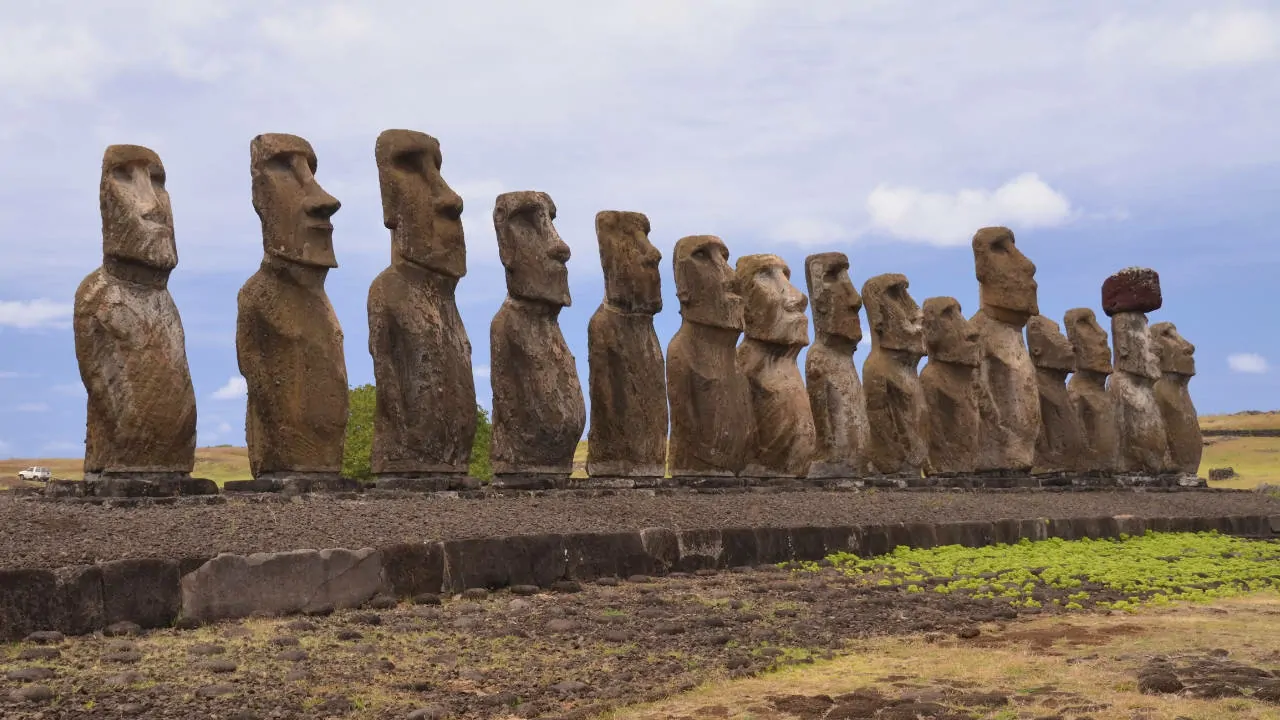The Moai statues of Easter Island are among the most iconic and mysterious monuments in the world. Located on a remote volcanic island in Polynesia, also known as Rapa Nui, these massive stone figures were carved by the Rapa Nui people hundreds of years ago and continue to fascinate archaeologists, historians, and travelers to this day.
Easter Island is home to nearly 1,000 Moai statues, many of which stand along the island’s coastlines with their backs to the sea. These statues, some weighing over 70 tons and standing up to 10 meters tall, were created between the 13th and 16th centuries. Made primarily from volcanic tuff, each statue features a large head with stylized facial features, often representing deified ancestors or important leaders.
The Moai statues were originally placed on stone platforms called ahu, which served as ceremonial and burial sites. Though their exact purpose remains debated, many researchers believe the statues were built to honor and represent powerful individuals and to project status, influence, and spiritual strength.
What makes the Moai even more impressive is how the Rapa Nui people managed to move such massive structures across the island without modern technology. Theories include the use of wooden sledges, ropes, and even “walking” the statues using a coordinated rocking motion.
Today, the Moai statues are a UNESCO World Heritage Site and continue to be a powerful symbol of cultural identity and human creativity.
